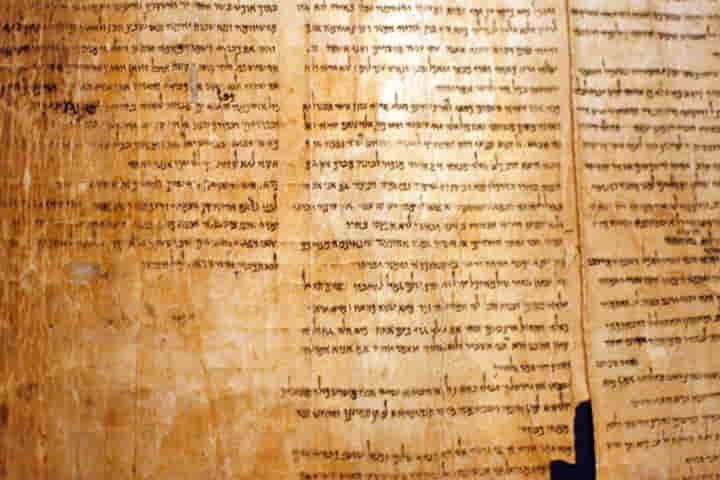Ever since they were first discovered between November 1946 and February 1947 in a Qumran cave, the Dead Sea Scrolls have always been mysterious and enigmatic. Found in a cave near the Dead Sea, in the West Bank Judaean Desert, the scrolls have fascinated humankind since then.
The scrolls are the oldest manuscript of the Hebrew Bible but we still don’t know who wrote them. With the passage of time, the development of technology has come to the aid of scholars as it enables them to get a better perception of these texts.
According to an article in independent.co.uk, the University of Groningen’s Qumran Institute in the Netherlands, conducted a thorough investigation into palaeography – study of the old handwriting — of one of the scrolls.
After going through a series of processes which included digitisation, machine reading and analysis of statistics, the researchers suggested that two scribes wrote the two halves of the manuscript. What is significant is that they also suggest that the two had similar handwriting.
Also read: 20,000-year-old Stone Age cave paintings found near Delhi bring alive ancient civilisation
The researchers did the study on the 1QIsaa scroll. A large manuscript, it was one of the seven that had been found in 1947 in Qumran, near the Dead Sea.
The manuscript, which is 2,000-year-old, has 66 chapters of the Hebrew Bible’s Book of Isaiah. It is important to note that it predates Isaiah’s other Hebrew manuscripts by more than 1,000 years.
An algorithm was run in order to disconnect the ink used in the scroll from the background, which was either leather or the papyrus. Further, the algorithm looked at every character in the text with great care – seeking minute differences or changes that provide a lead about a change in the writer.
It was only a few years ago when this kind of algorithmic technology was used in biblical studies and digital humanities.
Also read: A 2,550-year-old inscription reveals Mesopotamia's ancient footprint on the Arabian Peninsula
Even though the study title includes artificial intelligence it in no way suggests the taking over of the scholars’ work by the computers.
This latest study does suggest that the earlier held theory that the original manuscript was written by one individual does not hold good. Researchers found that at the end of the 27th column of the total 54 in the text, there is a break in the manuscript showing a three line gap and change in the material.
Attached to the first sheet is the second one and this where the researchers suggest the change in the author took place. This study gives credence to the earlier held view that there may have been a team of scribes who wrote the Dead Sea Scrolls. Among them there may have been senior members as well as apprentices.
However, it may be noted that it is not necessary that the author of the work changed as it may be possible that there could have been a change in the pen used to write, or the nib was sharpened. It is also possible that due to health reasons, the writing of the author altered.
However, the most likely reason seems to be a change of scribe.
The cutting edge of technology and computers are gradually playing a vital role in analysis of texts. There is an appreciable increase in the number of papers which are discussed and presented in conferences related to Hebrew Bible and the New Testament, that are exploring different aspects of transferring texts into digital medium. An example of this is the Codex Sinaiticus project.
In fact researchers in Switzerland, including the Biblical scholars, are utilising machine learning and stylometry, which is the study of linguistic style, to find out for example, which new letters were authored by Paul the Apostle.
Also read: Did the Pearl Harbour incident trigger the end of a Japanese logging camp in Canada?
Besides this, texts are being modelled to find out the historical themes across the Hebrew Bible while for text mining, machine learning is being used. In the latter, a target text is compared with many similar other texts. This is done to seek out parallel uses of the same words or ideas in order to know variations between different texts.
Machine learning tools do require fine tuning as it produces a large number of possibilities requiring several research hours on the part of researchers to decide which possibilities are useful for their work and which are not.
It is important to highlight that the primacy of the scholars is foremost in different researches of sacred texts – particularly the Christian scriptures and the Hebrew Bible — and that using digital tools to study them opens a completely new facet.




















